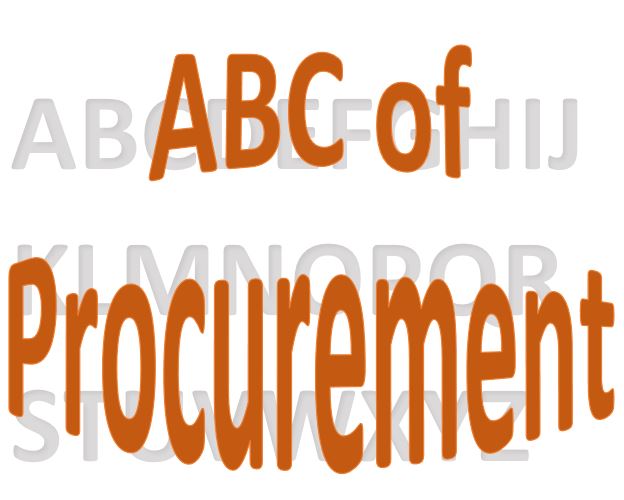No surprise here, procurement is special. We do not have to care about one, but two budgets.
The one is the procurement budget. This is a plan of spending we have to do in a year to get all the goods and services required for optimal operations of our company
The second one is the procurement team budget. This one plans the money the procurement team has available for salaries, office space, equipment etc.
Procurement budget
The procurement budget is the spending plan of the company. And we participate in the creation of the budget for the next year, as well as monitor what is going on during the year.
When doing the procurement budget we have to analyze and plan the following spending:
Contractual spend
These are the regular contracts that we renew every year. More-less we know this spend and all we need is to factor in eventual cost increase or savings. A couple of examples would be facilities management, rent, insurance, and fleet maintenance.
Raw materials
Here we have a variable cost. Even if the price stays the same, the cost will depend on the production plan for the next year. Therefore, we need to consult the sales & operations and planning team. They will give us the production plan for the next year. If there is a good increase in production we have good leverage to negotiate with our vendors, as the consumption will go up.
Investments and Fixed assets
Here we are talking about large scale investments into buildings or equipment. Usually, these kinds of purchases are:
- Known and approved by the board in advance
- Roling over two or multiple calendar years
- Have their own budget
So, seems we have all the data available, and just need to embed them in our budget for the next year.
Regular but not contracted spend
In this category, we have all those small purchases where the value in total is more-less similar over the years. Tools, spare parts, 3rd party transport cost, PPE. We know how much this will approximately cost but, due to various reasons, do not contract this spend.
Maverick spend
As of last the spend category we do not like. Maverick spend. It is occasional, uncontrolled, and unplanned. In most cases not even routed through procurement. Let us note that maverick spending is not always bad. Especially if we have projects. Sometimes a quick spend of a small amount can prevent a later much larger cost. Anyway, it is a spend and hence somehow our responsibility. For the purpose of budgeting, all we can do is analyze previous years and pluck in a total number.
Procurement team budget
In an organization, we have three types of departments when it comes to cost: Profit centre, service centre and cost centre. You can read more about this in my article Is procurement adding value to the business?
Procurement is generally considered a cost centre. Therefore, the aim is always to reduce the procurement team budget. But is it always a good idea?
Salaries
Salaries are the largest single spend in the procurement budget. Therefore the managers tend to hire staff that accept to work for lower pay. This results in employees that are either lacking the knowledge or motivation to get the best possible result. Creating financial incentives for the procurement team is very difficult. We can simply say that we will give back a certain percentage of the savings. But, the executive may “forget” about the minimal requirements in order to reduce the price. And secondly, there is a limit to how much the price can go down.
Therefore salaries have to be connected to a set of KPIs. They will include: reaching the target/budgeted spend, compliance, spend under management and others.
Education
This is a budget line I do not see often in procurement budgets. Procurement teams must visit conferences, and attend seminars and meetings in order to keep themself up-to-date. Secondly, we have to add some amount for books. While we expect our executives to learn and grow, often we forget that good books are not that cheap. Having a library where everyone can loan a book is a way to push for continuous education within the team.
Technology
Especially COVID-19 brought up remote work and meetings. And procurement is and will be using remote meetings. Still, we rarely propose to the management to get good equipment for this purpose. While sales have conference rooms with all the perks, we sit behind our desks, using the cheapest headsets available. Set every year some amount aside for a conference set, professional microphones and headphones for the team. Invest in a digital whiteboard. Once your team can see, hear and talk to the supplier clearly they will be able to focus more on their core goal. To get the best possible deal.
Being drowned in our day-to-day tasks we slack often during budget preparation. Which then results in not meeting the goals. And, consequently, our management is unsatisfied. Do a good and realistic budget. And follow up throughout the year. The management will appreciate knowing that “things are under control”.


